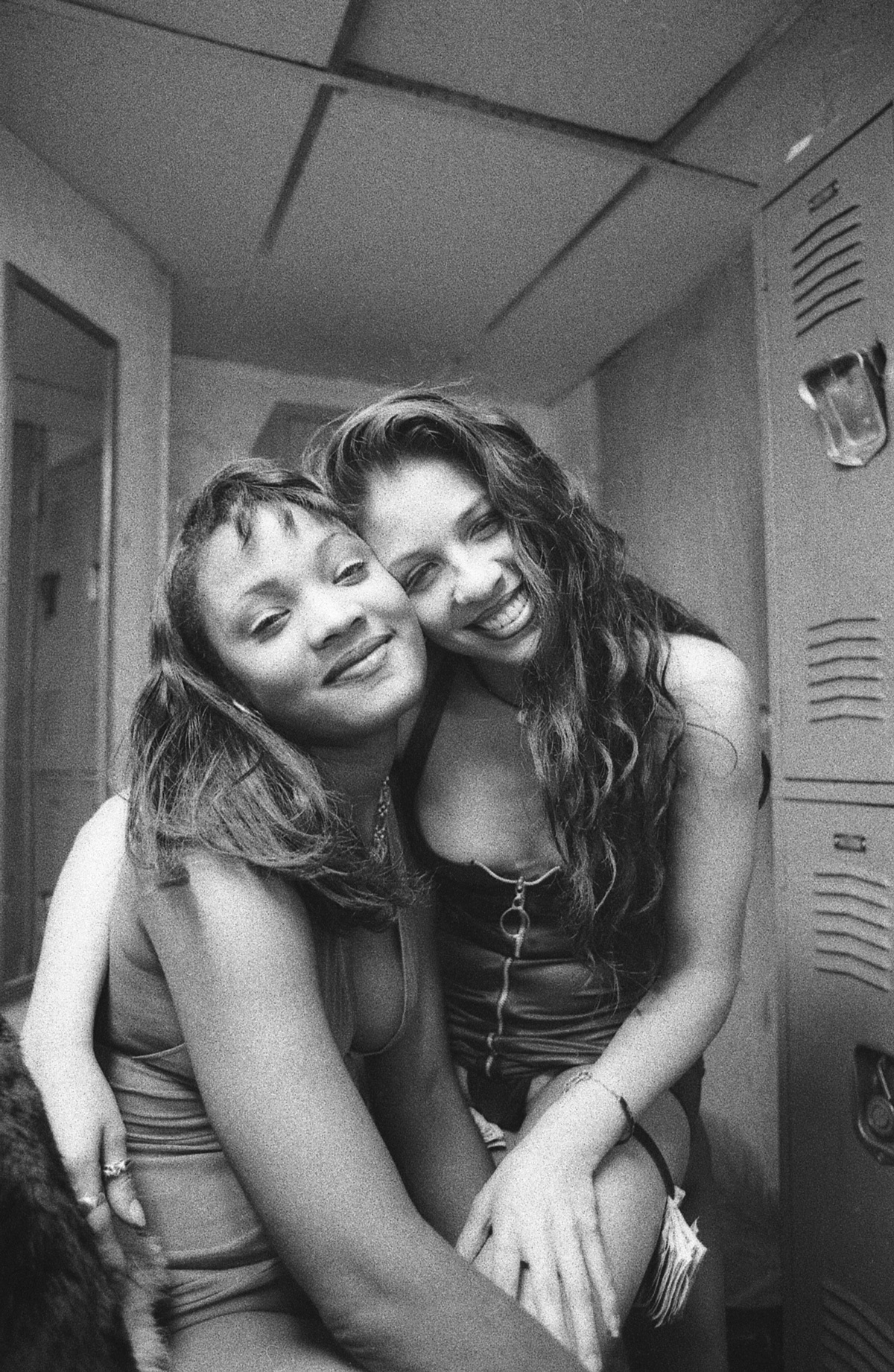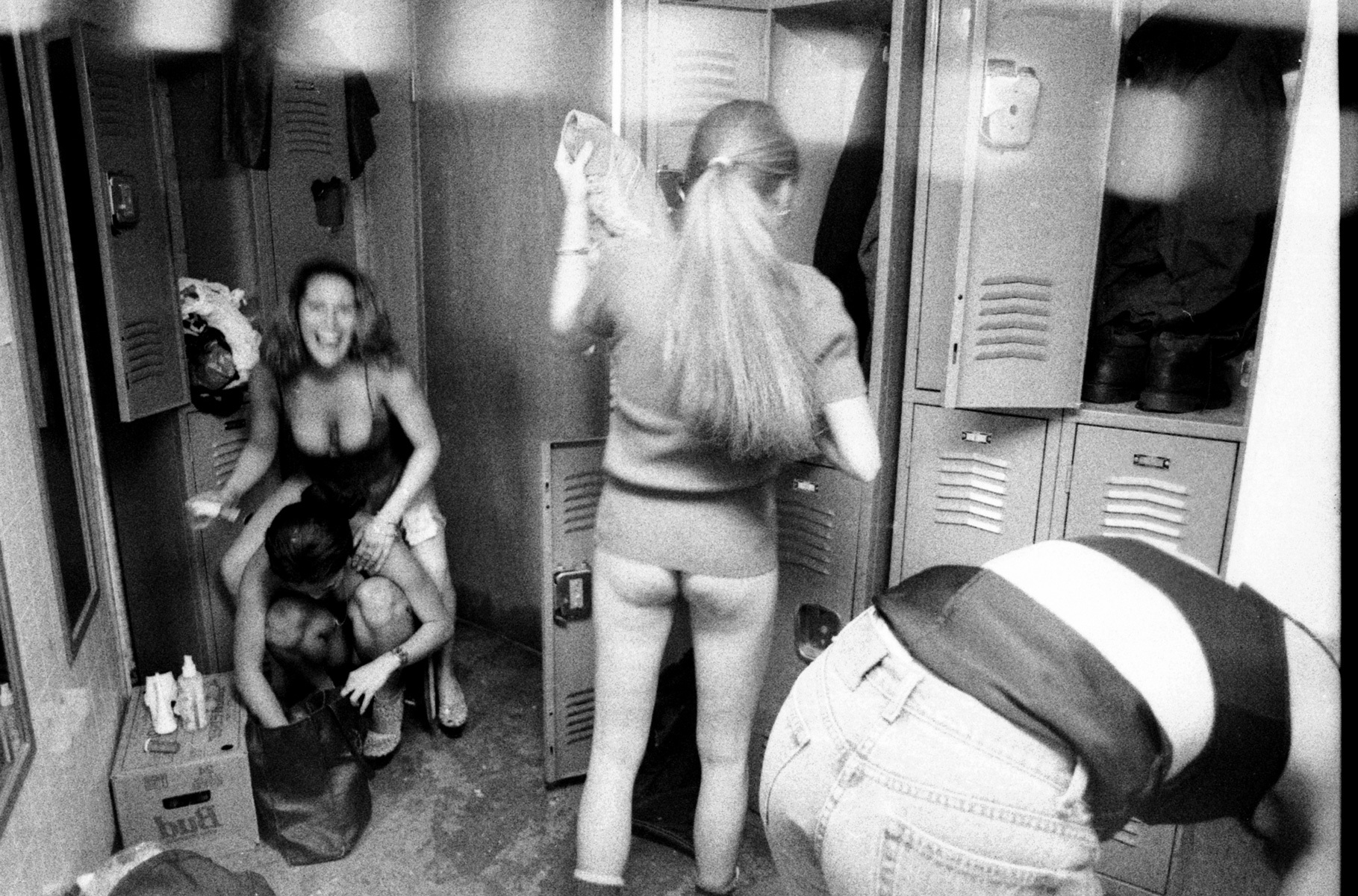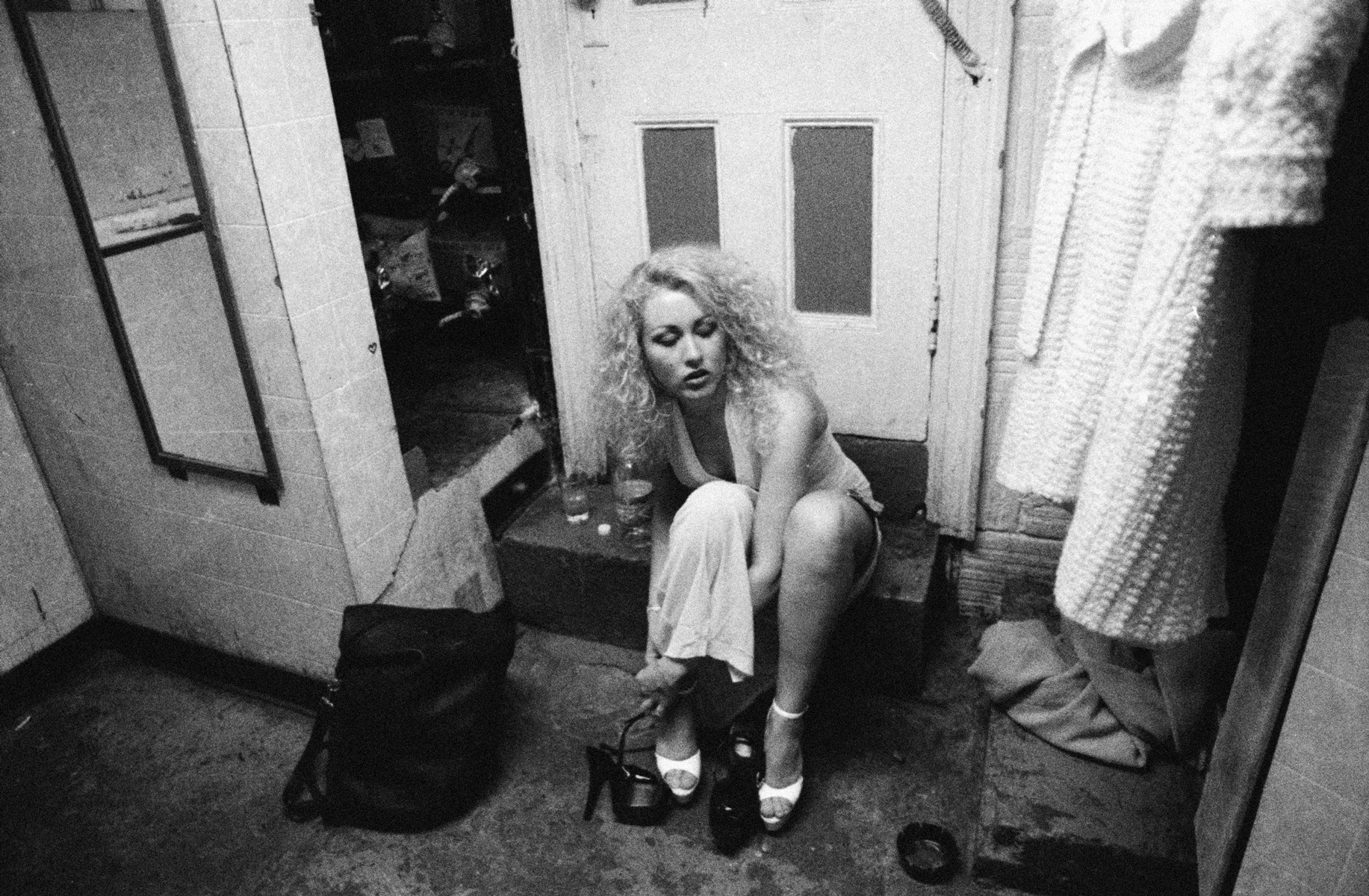Fascinated by New York City’s stripping underworld from a very young age, at 19-years-old photographer Yana Toyber found herself fully immersed within its culture. Nine years later, Yana has unearthed a series of incredibly candid images from her time working at a local strip club. Conceived as a zine, these lost relics tell a tale of fantasy, lust, and taboo. They provide unprecedented access to all that went on behind the scenes at New York’s strip clubs circa 1997.
“Strip clubs have changed so much, culturally, since 1997,” muses Yana, “The culture is a lot more acceptable these days. We would all be very secretive about that part of our lives back then. There was a perception of desperation that society associated with women who chose to work in that industry.” Far from wanting to objectify the women she worked alongside, Yana’s images empower them. After all, these were women who delighted in taking ownership of their bodies. After her zine debuted this weekend at New York’s Independent Artbook Fair, we spoke with Yana about the changing face of NYC, female sexuality, and the politics of stripping.

Where did the idea come from?
I was 19 at the time and attending my freshman year at SVA. I planned on immersing myself in the stripping subculture and documenting it. It was my plan since high school.
Why a zine?
I would say zines are very 90s and that’s when these pictures were taken, so it seems to visually be a great avenue.
Why publish them now?
I feel it’s the right time to publish them now because NY has changed so much and continues to do so at such a rapid pace. It’s interesting to look back at a place which would never be able to exist here and now.

How do you think strip clubs have changed, culturally, since 1997?
The culture is a lot more acceptable these days. It wasn’t as out in the open as it is now. There was a perception of desperation that society associated with women who chose to work in that industry. I think these days it’s a lot more acceptable. Also, I think the actual clubs themselves are bigger and more opulent.
What do you see as the politics of stripping?
I think the politics of stripping are very simple and honest. It’s an exchange of energy; one being the energy that money brings and another the energy of fantasy and lust.
What are your personal views about the women who strip?
I think most women would love to be able to strip at least one day in their life. These women love male attention, getting dressed up, getting fawned over, getting gifts, and earning money. I think women who strip are enlightened in a certain way. They are in tune with their sexuality; they are confident and a bit rebellious. They are often above average intelligence and usually are very creative.

Where does objectification end and empowerment begin?
I think when it comes to stripping there is always a bit of objectification and the women who choose to strip are aware of this. They use it to their best advantage. It never bothered me and I used it to my advantage to further my life goals. I used the money to pay for film and school and to get anything I needed to get done.
Backstage is available from PAPER WORK NY
Credits
Text Tish Weinstock
Photography Yana Toyber
